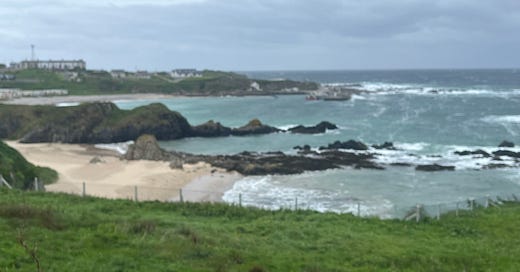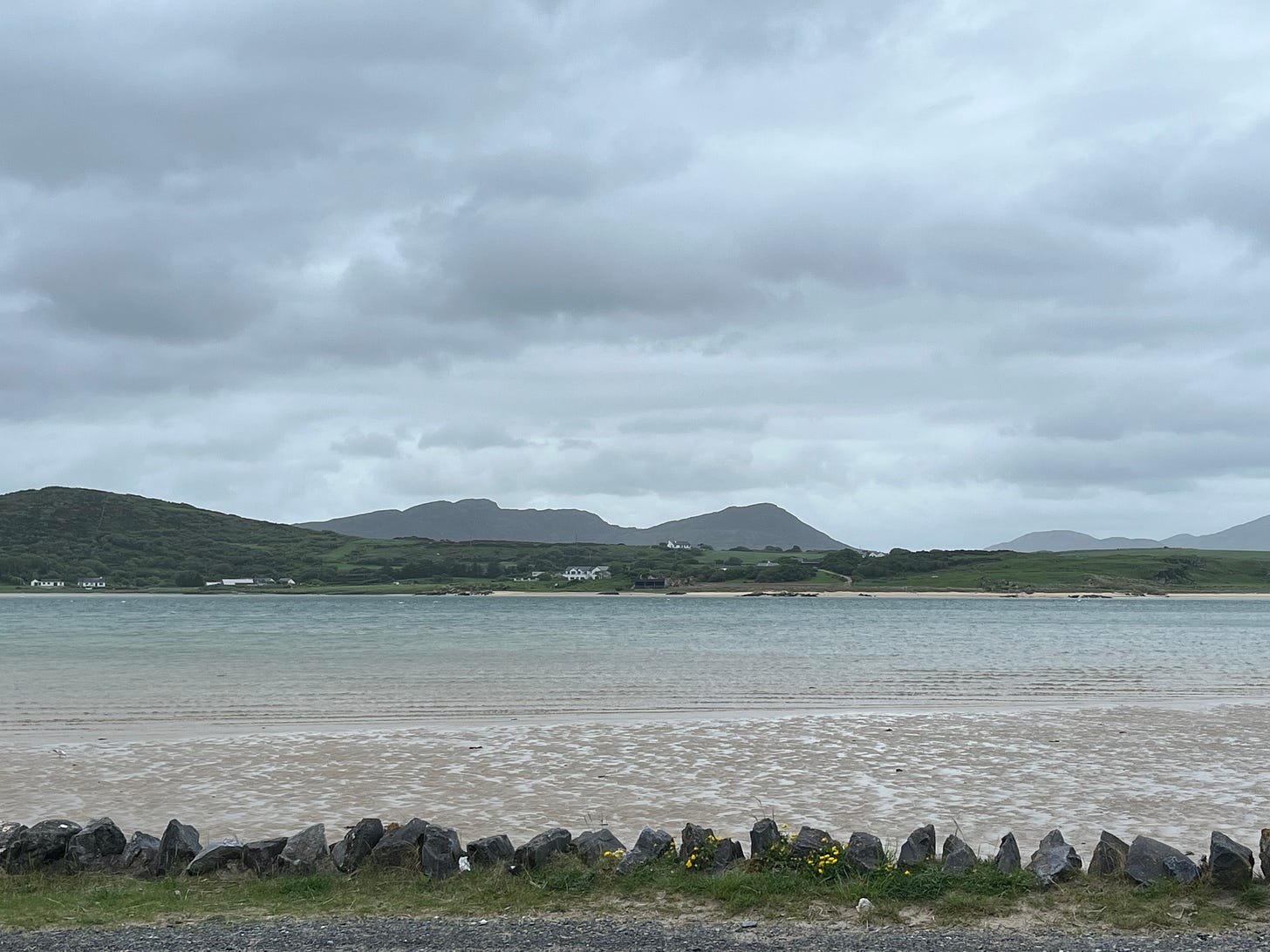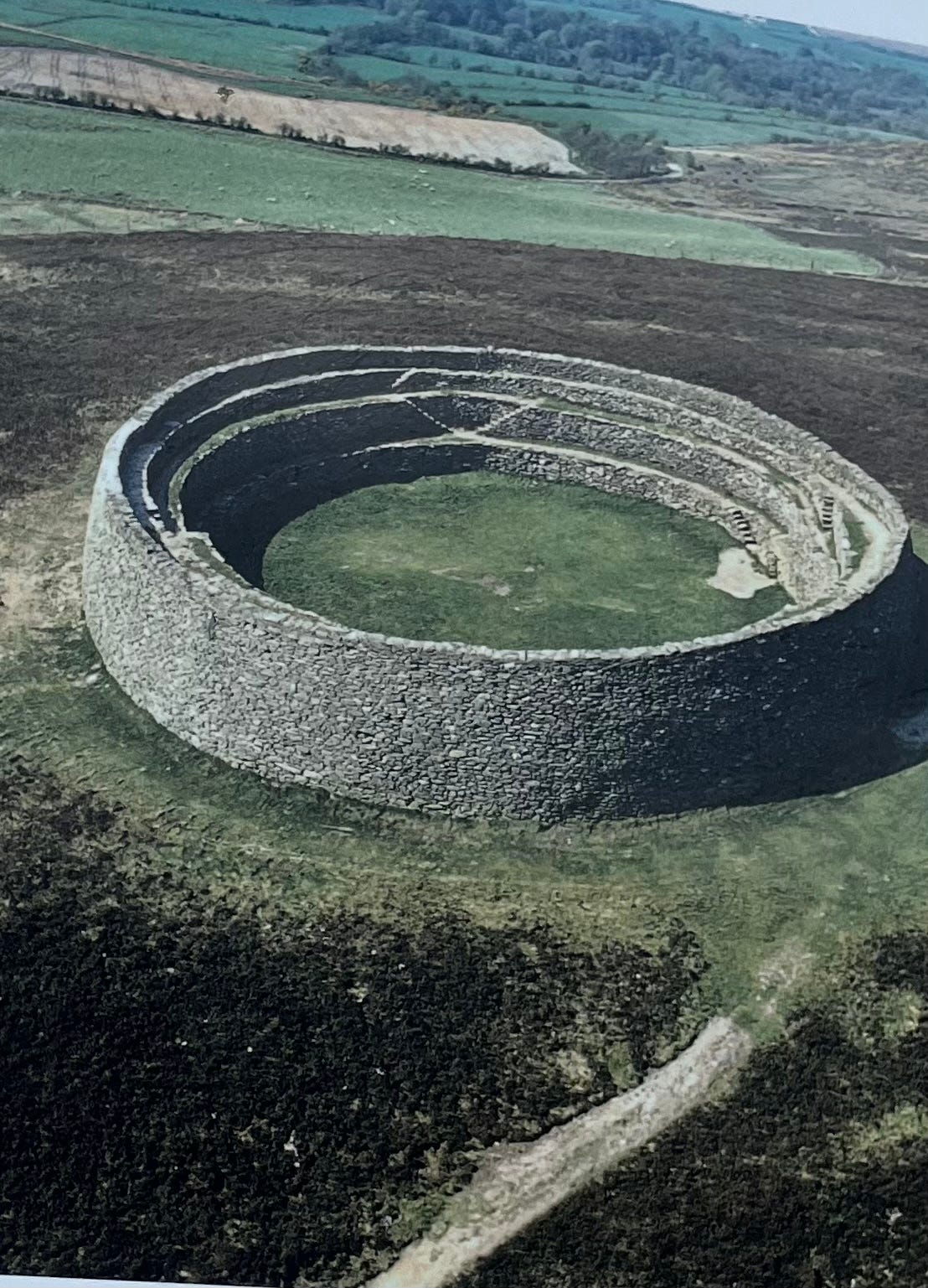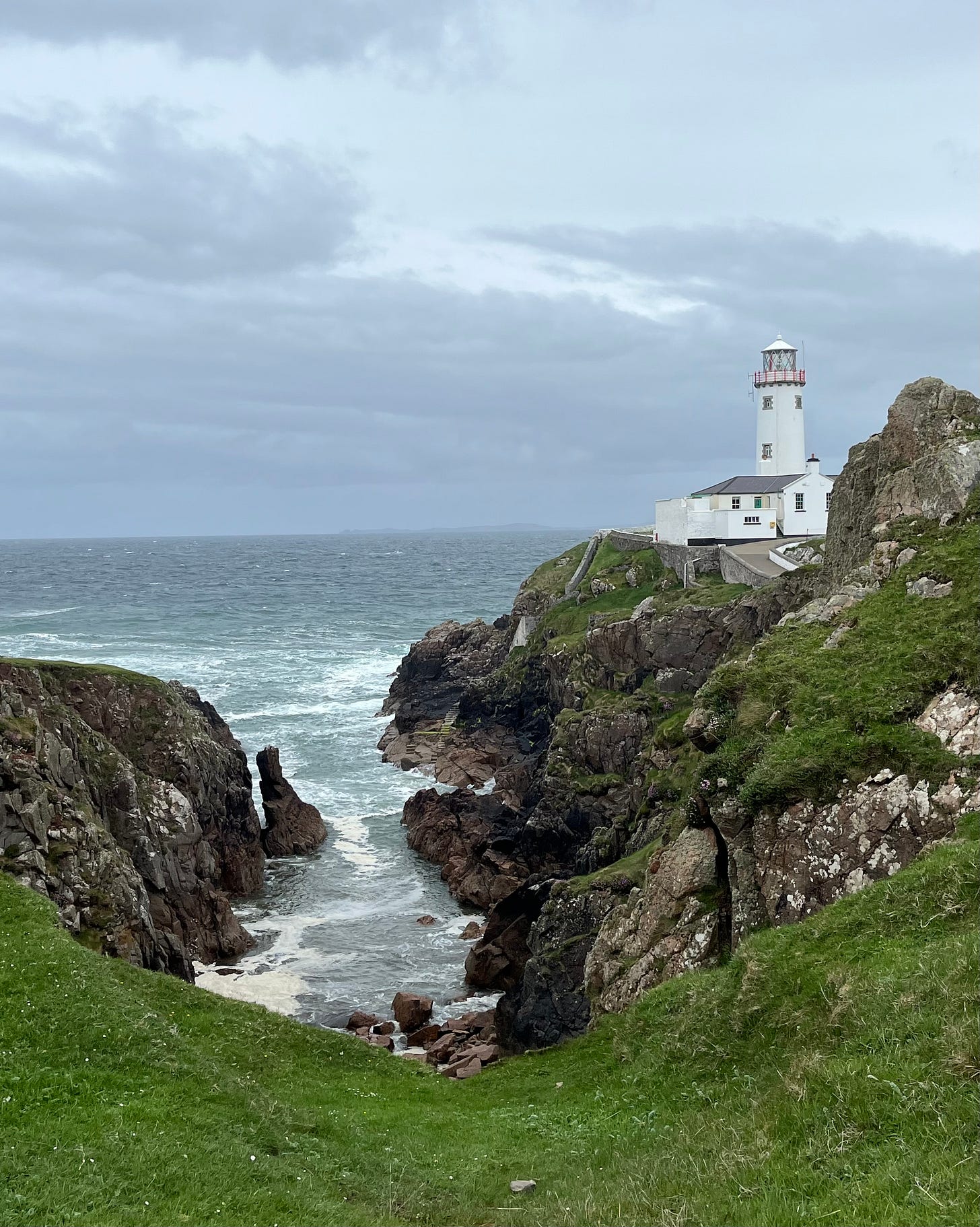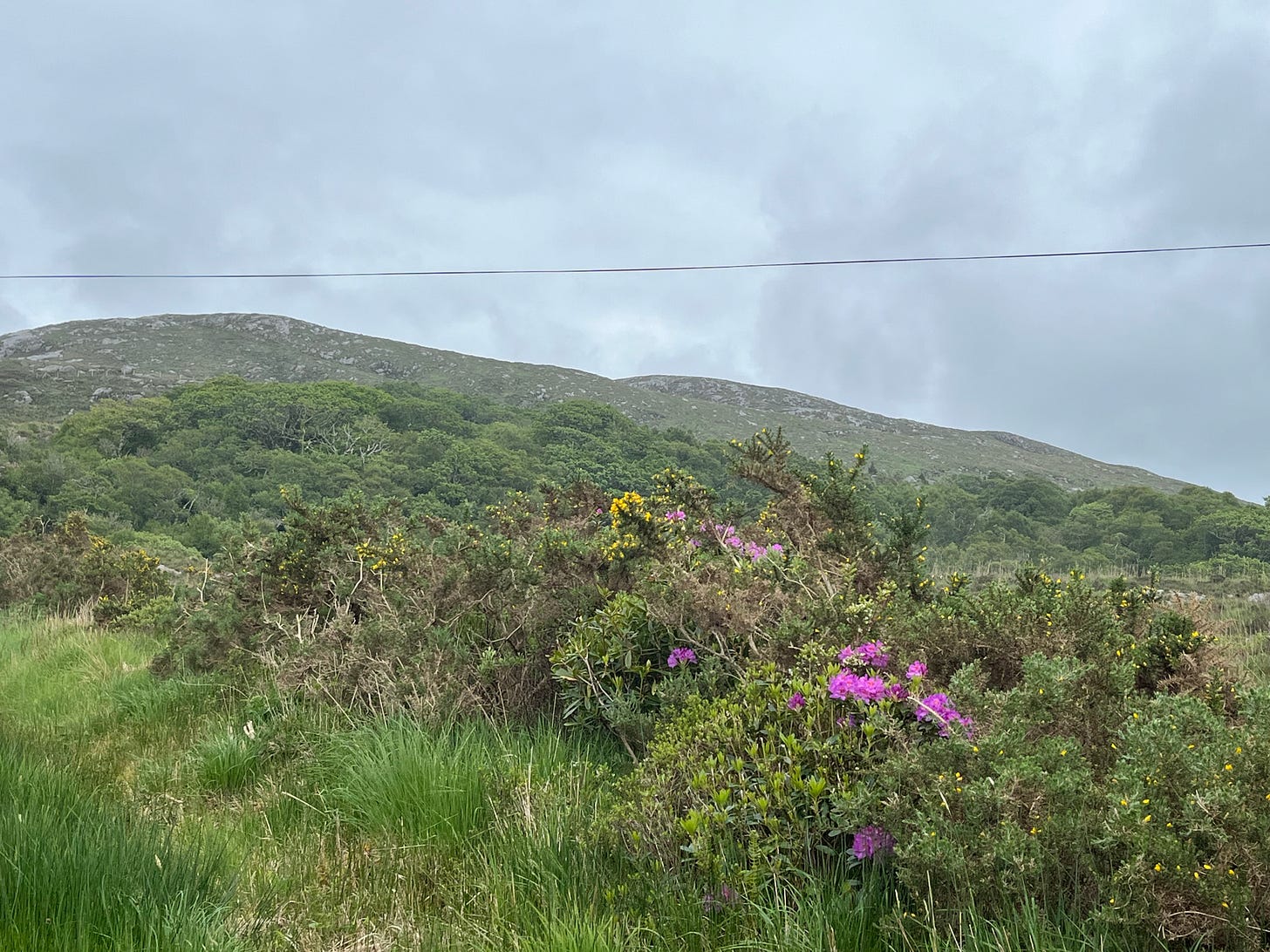Along Ireland's Wild Atlantic Way: Donegal
Discovering Donegal - Toby, me and the VW campervan
After weeks of preparation, of working out a rough daily itinerary to travel from Muff, on the borders of Derry and Donegal and the official start - or finish - of Ireland’s Wild Atlantic Way, to the city of Galway in 18 days, planning where to stop for the first few nights, and managing to book a dog friendly cabin on the ferry crossing from Holyhead to Dublin, we were finally on our way.
Or so I thought. I woke in the night, in the pet-friendly hotel I’d treated myself to near to Holyhead, Carreg Bran, to the ping of a text message.
“We’re sorry to inform you that the 14.25 ferry crossing you’re booked on has been cancelled, due to technical problems.” Oh no - all my plans thrown in the air! The 0800 crossing was cancelled as well. Would I be able to stay another night in this hotel and cross the next day? What were the alternatives? Deliberations kept me awake for hours. But over breakfast the next morning, having found out the hotel was full that night, I discovered that Irish Ferries had a crossing on their Swift ferry, leaving in a couple of hours and with space for me, my van and a dog. Could I make it? Never normally one to make quick decisions, I abandoned breakfast, chucked my stuff in the van and set off for the port at Holyhead - not without taking a wrong turning in my haste, and finding myself going the wrong way over the Menai Bridge :( . But all was well, check in was super easy, a friendly co-VW van traveller showed me how to disable the van interior alarm so that it wouldn’t go off with Toby inside it (quick tip for a short cut: double click on the lock symbol on the key!) - and soon I was sitting comfortably in the big lounge, finally drinking my breakfast coffee as I looked out over the Irish Sea.
Next decision on arrival was - where to stop for the night? As I’d left a few hours earlier than planned, and on a speedier ferry, I thought it would be too early to stop at the first camp site I’d picked on, half an hour’s drive north from Dublin (North Beach Caravan Park, in Rush, for anyone planning a similar trip info@northbeach.ie.) What about the next plan, the marina at Carlingford? There’s a motorhome aire on the marina, with all facilities, plenty of space for camper vans and motorhomes. I’d already spoken to them, sounded great - well, I’d see how I felt when I got to the turning, after probably a couple of hours.
Suddenly there was the sign to Carlingford - and I made my first big mistake, something I’ve learned from this trip: never drive too far in one day, better to stop too early than too late. Because now the only other places I’d checked out, meant for the following night, were on the remote Inishowen Peninsula, in the far north of Donegal. If I’d been travelling with someone else, I expect we’d have pulled in, consulted the map and some of the apps like Park4Night, or Search for Sites. Or the super useful Facebook group I’d joined, Total Motorhome Ireland and their brilliant map for members, showing campsites, park-ups and helpful pubs with carparks. Big shout-out to them (TMI, yourtmi.com) as they were the source of most of my campsites and overnight park-ups. So as I already had some options, I just barrelled on into the night, soon discarding the idea of looking at the possible but unknown parking places beside beaches, and reaching the SeaView Tavern near Malin Head as evening was drawing in.
Not just evening, but the wind had arrived with a vengeance. Probably parking for the night right in front of the Wild Atlantic sea, with a gale-force wind howling across it, wasn’t a brilliant idea. But here we were. Trying to work out which direction the wind was coming, I found a spot in their carpark where there was some protection, and headed off into the pub with Toby, to get a meal.
I then had my first introduction to the surprising and unexpected attitude of the Irish to dogs. It was almost as if I’d arrived with the plague, the reaction I produced at waltzing in with Toby. “I’m afraid no dogs are allowed inside,” a girl told me in a rather embarrassed way - as if I should have known better. I pleaded to be allowed at least to go to the loo, before I was ushered to their outside area where you were allowed with a dog. It was at least covered, they finally managed to find a heater that worked so that I could take off my woolly hat, and I had a very delicious meal of fresh hake fillet, baked with a tomato and pine nut crust, before heading off for a rocky, sleepless night in the campervan.
The view from the SeaView Tavern on a glorious sunny day must be spectacular, but this wasn't one of those days. The next morning, with the wind still blowing such a hoolie that I could hardly stand up, I decided to get away from this northerly, exposed stretch of coast as fast as I could.
My route planning had been done with the help of the invaluable guide, Wild Atlantic Way route guide and atlas, with suggested daily itineraries and corresponding maps. The Inishowen Peninsula had attracted me as it was so remote, wild and rugged; it wasn't the weather to be exploring the beaches of the north east, so instead I headed south, along the shores of the fjord of Lough Swilly towards Buncrana - guided by the welcome wavy blue sign with a helpful S for south, of the Wild Atlantic Way. This 2600 km- long route along the Atlantic coast, from the Inishowen Peninsula to Co. Cork in the south, was introduced by Failte Ireland, the Irish Tourist Board, in 2014, as a way of encouraging tourists into areas often neglected by tourism.
It had been far too windy to try and make breakfast in the campervan in Malin Head, so by the time I reached Buncrana I was keeping my eyes peeled for a likely-looking cafe that would meet my exacting standards for coffee! A friendly traffic warden pointed me in the right direction, as well as explaining the parking fees; and Swan Perk in Main Street provided an excellent and very welcome flat white alongside poached eggs on sourdough with avocado. Toby, meanwhile, was allowed to hang out in the garden area.
In the summer months, a ferry can take you from Buncrana across Lough Swilly, but in May it wasn’t running yet, so I followed the WAW to my next stop: the amazing stone fort of Grianon of Aileach, still on the Inishowen Peninsula. The origins of this spectacular hilltop fort date back to 1700 BC, and are linked to the Tuatha de Danann, who invaded Ireland before the Celts and worshipped the Good God, Dagda. With a gale force wind still blowing, I struggled up the hill to stand inside this evocative place.
Although Ireland is great for providing places where camper vans can park up for the night - in parking lots beside beaches, near lighthouses, in towns - I was always a bit anxious if I didn't know where I was going to lay my head that night. So I’d booked a campsite some 170 km from Malin Head, at Creeslough. There was plenty of stunning scenery en route: seemingly endless beaches of golden sand, mostly deserted and calling out for me to give Toby a run after a ball - Ballymastocker, Portsalon - leading up to the Fanad Peninsula with the photogenic lighthouse at Fanad Head, built in 1817 and only automated in 1983.
The excellent Wild Atlantic Camp at Creeslough (wildatlanticcamp.ie) gave me all the home comforts I was in need of: hot showers, wifi, an on-site cafe that made amazing pancakes, and all in beautiful countryside just on the edge of the small town. As I was instantly adopted as a surrogate granny by an adorable pair of three-year-old twins, and as there was so much to explore in the vicinity, I decided to stay a couple of nights. First a drive round the stunning headland of Rosguill with its hills, heathland and unspoilt white beaches, albeit mostly overlooked by a mass of holiday homes; then along a small local road - if you’re brave enough, the L roads in Ireland are usually the most interesting, but keeping a constant look out for passing places - through wild, untouched mountain scenery, the unmistakable peaks of Errigal and Muckish always prominent, to reach Glenveagh National Park and its visitor centre. A walk beside the lake took me to the neo-gothic Glenveagh Castle, where I discovered that Ireland also doesn't allow dogs except guide dogs on public transport, even shuttle buses in a national park!
I’d read that the third of the small peninsulas off the north-western Donegal coast, Horn Head, offered a spectacular drive, but not for the faint-hearted. I am definitely faint-hearted when it comes to driving a campervan along a very narrow road with 200m steep drops on one side, so I gave it a miss. In spite of missing out on all the seabirds - including those gorgeous puffins - who make the cliff ledges their summer home. Instead, the weather the next day was still lovely, just right for a wander from Ards Friary (where Irish Capuchin Franciscan friars still live and offer retreats), through the forest park and along white sand beaches. Donegal just seems to have it all.
